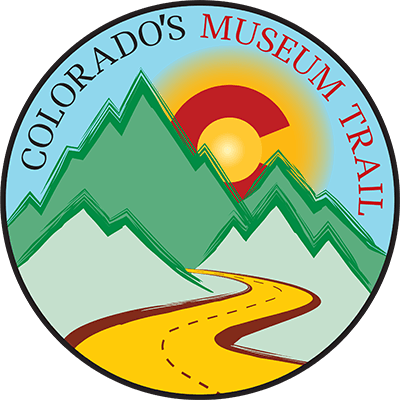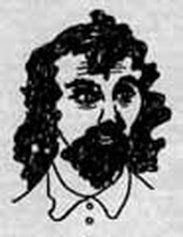Alferd Packer - "The Colorado Cannibal"
On February 9, 1874, Alferd Packer and five other men departed from the camp of Ute Chief Ouray, near what is now Montrose, Colorado. They were resuming a trek that had begun several months earlier in Provo, Utah, hoping to reach newly discovered gold prospects in Breckenridge, Colorado.
While the original party was considerably larger, only Packer (as guide) and Israel Swan, Shannon Wilson Bell, George Noon, James Humphrey, and Frank Miller dared risk the sometimes brutal Colorado winter in search of riches. And brutal it was, as not long after leaving the safety of Chief Ouray's camp, the group was engulfed in a furious blizzard near the present site of Lake City, Colorado.
Packer was next seen on April 16, 1874, straggling into the Los Pinos Indian Agency with little more than a rifle and a skinning knife belonging to members of his party. The story Packer told at that time was that, once the storm hit, he had set up camp while the others went forward in search of food. They never returned, and Packer subsequently headed out for Los Pinos.
After recovering, Packer left for Saguache, Colorado, where by some accounts he suddenly became a 'big spender' at the local saloon. Unfortunately for Packer, in Saguache he encountered several men from the original Provo group who were dubious about his version of the story.
Indian Agent Charles Adams took Packer back to Los Pinos for questioning about the matter, and on May 8, 1874, extracted the first of Packard's two conflicting confessions. According to Packer, Israel Swan had died and the others, being without food, had eaten him. Subsequently, three others had died from exposure and starvation. Then, Packer admitted to killing Shannon Bell, claiming it was in self-defense.
Packer was transported back to Saguache and jailed outside of town, not in the town's jail house as some have told. In August, Packer escaped from custody and wasn't seen again until March, 1883, when Frenchy Cabazon, one of the original prospecting party, found him quite by accident in Douglas, Wyoming.
By coincidence, on the day of Packer's escape from Saguache, the ghostly remains of the missing prospectors were found in a valley overlooking what is now Lake City, Colorado. There was evidence of a struggle and foul play. The grave-site is now marked and fenced as a tribute to the murdered men.
In March, 1883, Packer was taken to Denver, Colorado, and questioned again about the incident. In his second confession, Packer stuck with his original claim of self-defense, but admitted to stealing the rifle and $70 in cash from the dead men. Packer was charged with the murder of Israel Swan, the first to die, and was taken to Lake City for trial.
The jury wasted no time in finding Packer guilty of murder, and Judge Melville B. Gerry pronounced that Packer "be hanged by the neck until you are dead, dead, dead...".
Packer appealed his conviction to the Colorado Supreme Court where the verdict was reversed. He was tried again and this time found guilty of manslaughter and sentenced to 40 years in the state penitentiary.
After serving only 17 years of his sentence, Packer's cause was championed by a grass-roots campaign in Denver. In 1901, Governor Charles S. Thomas granted Packer's parole request.
Packer moved to Littleton, Colorado, where by all accounts he became a model citizen, well liked by all of his neighbors. He died of natural causes on April 23, 1907, and was buried with military funeral in Littleton Cemetery.
Such a legendary story was Packer's that in 1968, students at the University of Colorado in Boulder christened their new cafeteria The Alferd E. Packer Memorial Grill ! In 1982, a statue honoring Packer was commissioned and can be seen on the Boulder campus.
A figure of Packer sits in the women's cell at the Saguache County Museum. Sheriff Amos Wall guards the prisoner from his chair in his office. On display are handcuffs, leg irons and other items relating to the history of Alferd Packer.
Information for this story was compiled from The Saguache County Museum,
Alferd Packer's Wilderness Cookbook by James E. Banks, and other sources.




